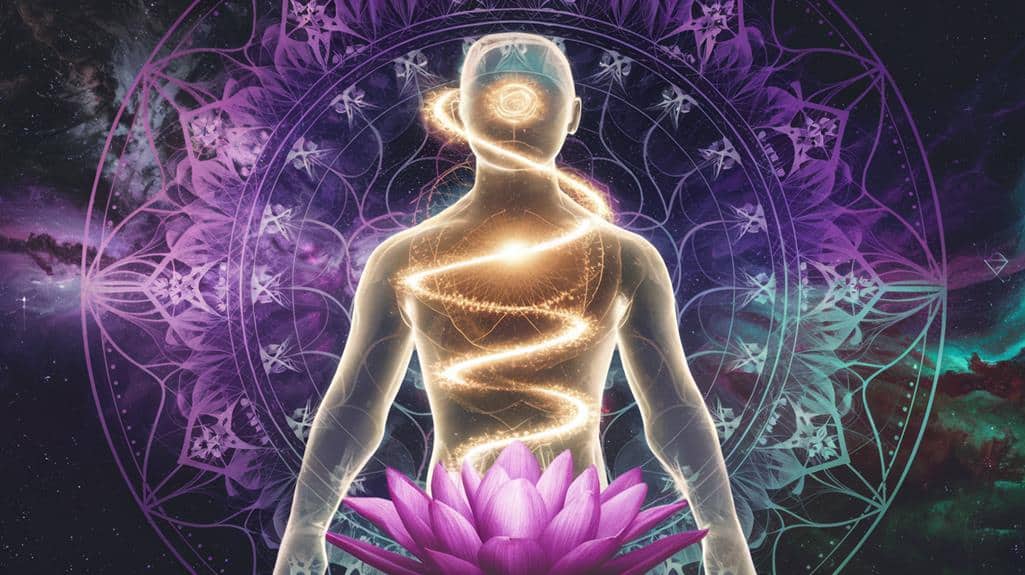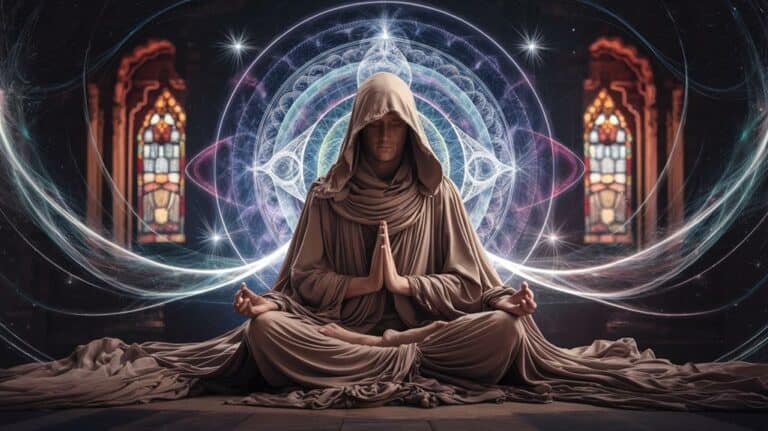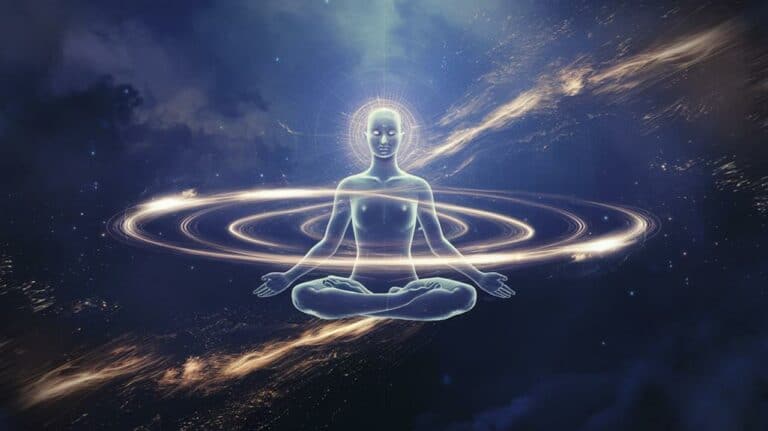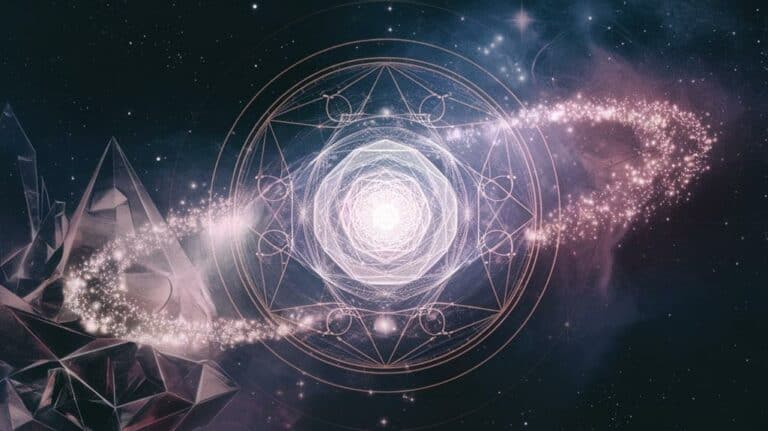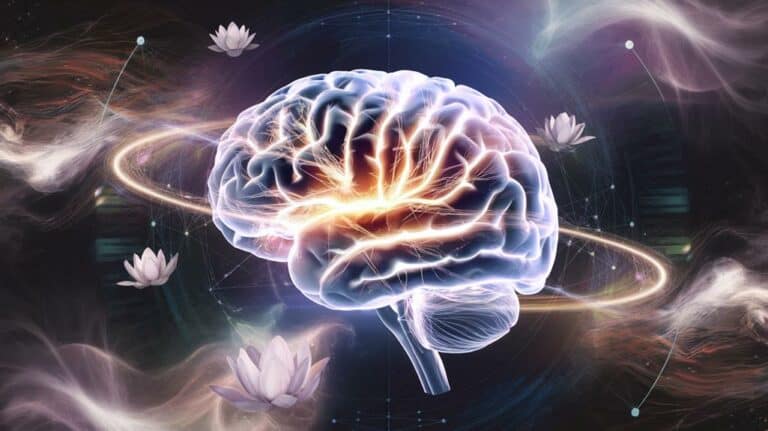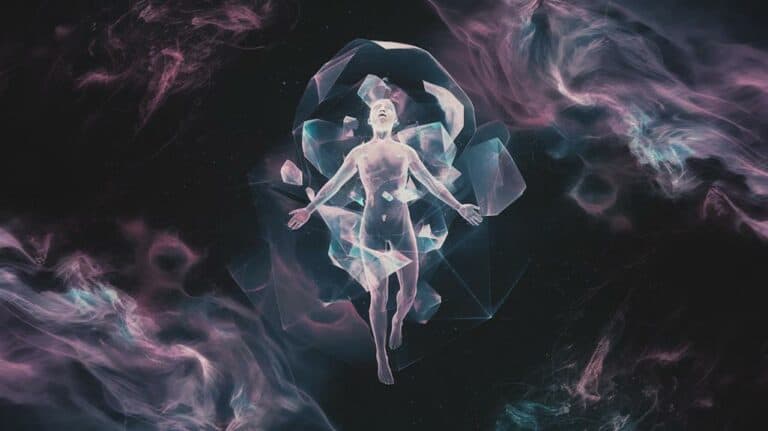Kundalini Awakening and Its Mystical Implications
You’ve likely encountered references to Kundalini awakening in spiritual discussions or yoga practices, but its true nature remains enigmatic to most seekers. This profound energetic phenomenon, often depicted as a serpent coiled at the base of your spine, isn’t merely a metaphysical concept – it’s a transformative force that can reshape your entire understanding of consciousness. Whether you’re skeptical of its existence or deeply immersed in spiritual practices, the implications of Kundalini awakening extend far beyond personal enlightenment, touching upon the very foundations of human potential and our relationship with the cosmos.
Origins of Kundalini Energy
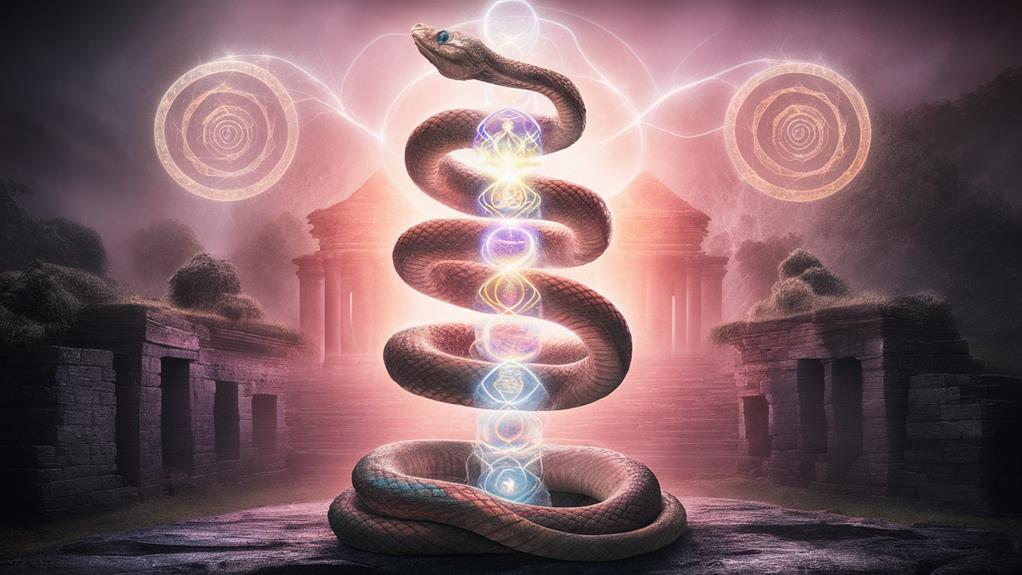
According to ancient Hindu traditions, Kundalini energy lies dormant at the base of your spine in the root chakra. This primordial force, often depicted as a coiled serpent, represents your untapped spiritual potential waiting to rise through your subtle energy centers.
You’ll find its origins deeply rooted in the Vedic and Tantric traditions, where sacred texts describe it as the divine feminine energy, or Shakti, that’s intimately connected to cosmic consciousness.
As you explore deeper into understanding Kundalini’s origins, you’ll discover that this essential force isn’t merely a philosophical concept but a tangible aspect of your spiritual anatomy.
Ancient yogis and mystics have mapped its presence through direct experience, recognizing it as the foundational power that drives evolution in human consciousness.
Within your energetic system, it’s the very same force that formed the universe, now residing within you as a microcosmic reflection of that primordial creative power.
When you awaken this dormant energy through dedicated spiritual practices, you’re fundamentally tapping into the same force that birthed galaxies and stars, initiating a profound transformation in your consciousness.
Signs and Physical Manifestations
The awakening of Kundalini energy manifests through distinct physical and emotional signs that you might experience during your spiritual journey.
You’ll notice intense sensations of heat or electricity moving up your spine, often accompanied by spontaneous body movements or trembling. These physical manifestations can range from gentle vibrations to powerful waves of energy coursing through your nervous system.
As the energy rises, you may experience heightened sensory awareness, where colors appear more vivid and sounds become crystal clear.
Your body might undergo spontaneous yogic postures (kriyas), and you’ll likely feel unusual sensations at the base of your spine, heart center, or crown of your head.
Don’t be surprised if you encounter periods of intense emotion, vivid dreams, or sudden insights into life’s deeper mysteries.
Physical symptoms can also include changes in breathing patterns, tingling sensations throughout your body, and occasional pressure at the third eye point between your eyebrows.
During this transformation, you might find yourself naturally drawn to meditation and solitude, as your consciousness expands beyond ordinary perception into domains of profound spiritual awareness.
Awakening Methods and Practices
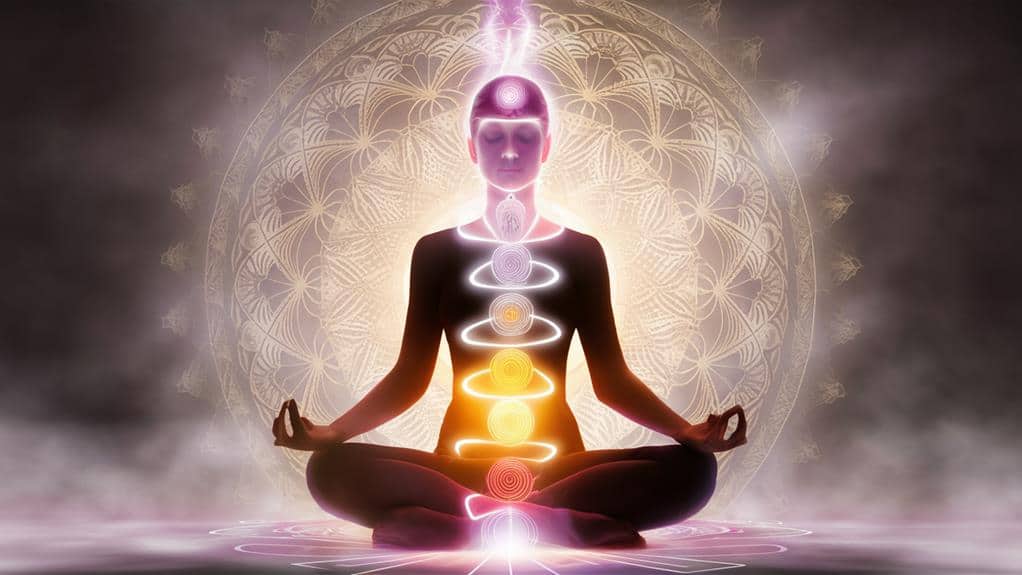
While many practitioners seek rapid Kundalini awakening, safe and sustainable methods require patience, proper guidance, and consistent practice. You’ll find that traditional approaches emphasize gradual awakening through dedicated meditation, pranayama breathing exercises, and systematic chakra work. These time-tested methods allow your energy system to adjust naturally, reducing the risk of overwhelming experiences.
You can begin your journey by establishing a daily practice of seated meditation, focusing on your spine’s base where Kundalini energy lies dormant. As you progress, you’ll want to incorporate specific breathing techniques like alternate nostril breathing (Nadi Shodhana) and breath of fire (Kapalbhati), which help purify your subtle energy channels.
It’s essential that you combine these practices with ethical living (yamas and niyamas) and regular yoga asanas that strengthen your physical vessel.
Before pursuing advanced techniques, you’ll need to cultivate inner stability through mantra repetition and energy-clearing visualizations. Remember that you’re working with profound spiritual forces, so it’s vital to maintain a balanced approach, ideally under the guidance of an experienced teacher who understands Kundalini’s transformative power.
Dangers and Safety Considerations
Several critical dangers accompany premature or unsupervised Kundalini awakening, including psychological distress, physical symptoms, and energetic imbalances.
You’ll need to understand that when this potent spiritual energy rises too quickly or without proper guidance, you might experience intense anxiety, dissociation, or overwhelming sensations that can destabilize your daily life.
If you’re considering awakening your Kundalini energy, you’ll want to be particularly mindful of potential physical manifestations, which can include uncontrollable body movements, intense heat sensations, or persistent pressure at the base of your spine.
You might encounter sleep disturbances, digestive issues, or unexpected shifts in your sensory perception that can be deeply unsettling without proper context and support.
To protect yourself, you’ll need to establish a strong foundation before pursuing Kundalini awakening.
This means working with qualified teachers who understand the intricacies of this powerful process, maintaining a balanced lifestyle, and developing a robust meditation practice.
Don’t rush the journey – your psychological and emotional stability should be well-established before you attempt to awaken this transformative force within you.
Scientific Perspectives on Kundalini
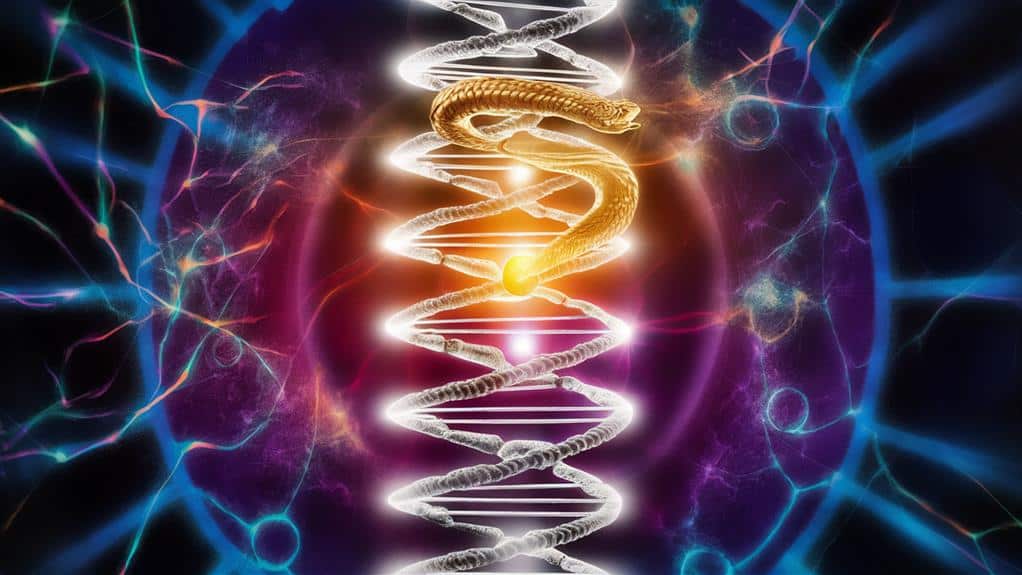
Modern scientific research has begun examining Kundalini experiences through neurobiological and psychological lenses, though conclusive studies remain limited.
You’ll find researchers exploring measurable physiological changes during Kundalini episodes, including altered brain wave patterns, shifts in nervous system activity, and fluctuations in hormonal levels. Some scientists have observed similarities between Kundalini experiences and temporal lobe activity, suggesting possible connections to naturally occurring neurological processes.
You’re likely to encounter varying scientific interpretations, from those viewing Kundalini as a purely physiological process to others recognizing it as a complex interaction between consciousness and biology.
Research has documented cases where practitioners show increased activity in areas associated with meditation and altered states of consciousness.
You’ll notice that while traditional Eastern perspectives describe Kundalini as subtle energy, Western scientific frameworks often interpret these experiences through the lens of neuroplasticity and psychosomatic responses.
As you explore this intersection of ancient wisdom and modern science, you’ll discover that researchers are increasingly acknowledging the profound effects of Kundalini experiences, even as they work to understand the underlying mechanisms through empirical observation.
Cultural Impact Through History
Beyond scientific investigations, Kundalini‘s influence has shaped cultures across continents for thousands of years. You’ll find its earliest written traces in ancient Sanskrit texts, where sages detailed their profound encounters with this transformative force.
Through the ages, you’ve inherited a rich tapestry of practices, from the intricate yogic traditions of India to the mystical disciplines of Tibet. As you explore deeper, you’ll discover how Kundalini concepts have transcended their Eastern origins, weaving into the spiritual fabric of diverse societies.
In medieval Europe, alchemists described similar energetic awakenings using different terminology, while indigenous shamanic traditions worldwide have long recognized comparable forms of spiritual power. You’re part of a continuing legacy where artists, poets, and mystics have attempted to capture Kundalini’s essence through their work, creating timeless expressions of spiritual awakening that still resonate today.
The cultural impact of Kundalini hasn’t diminished with time. Instead, you’re witnessing its integration into contemporary wellness practices, spiritual movements, and healing modalities, proving its enduring relevance in humanity’s quest for deeper understanding and spiritual evolution.



